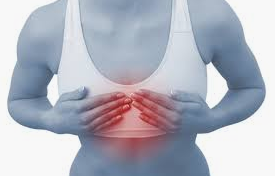Chest Pain MCQs :-
1. Aortic dissection is common and a non-threatening chest pain condition.
- True
- False
2. In children and adolescents, there is a history of moderate to severe chest pain during or following exercise. There may be a family history of sudden early death. Physical results show murmurs, clicks, decreased lower extremity pulses, irregular pulse and blood pressure.
- Arrhythmias
- Stable angina
- Myocarditis
- Pericarditis
- Congenital coronary anomalies
3. Most cases of syncope in children are caused by cardiac problems such as structural heart disease. Arrhythmias and coronary insufficiency.
- False
- True
4. Pain that occurs after lying down following eating a meal is most likely due to pericarditis.
- False
- True
5. The symptoms are acute onset, sense of doom, pleuritic pain, restlessness, mild to severe pain and hemo ptysis. There may be a history of recent trauma to the lower extremity, surgery or use of oral contraceptives. Physical results show fever, dyspnea. cough, tachycardia, tachypnea. diminished breath sounds and crackles and wheezing.
- Acute myocardial infarction
- Acute coronary artery insufficiency
- Pulmonary embolus
- Aortic dissection
6. Pulmonary embolus is often associated with shortness of breath, apprehension. hemoptysis and chest pain that increases with breathing.
True
False
7. Pericarditis and valvular diseases such as aortic steno sis and mitral valve prolapsed are serious and require immediate attention.
False
True
8. The symptoms are unilateral chest pain and a pain rash. Physical examination shows normal breath sounds with vesicular rash along dermatome.
Chest trauma (nb fracture)
Herpes zoster
Peptic ulcer disease
Costco hand
Esophagitis
9. The symptoms are severe. oppressive, constricting retrosternal discomfort, radiating to left or right arm, neck andlor jaw lasting more than 30 minutes. Other symptoms include diaphoresis. dyspnea and nausea. There is a history of coronary artery disease, cigarette smoking and elevated lipids. Physical findings show hypertension or hypotension and cardiac arrhythmia.
Aortic dissection
Acute myocardial infarction
Pulmonary embolus
Acute coronary artery insufficiency
10. Typical angina pain is described as sub sterna heaviness, pressure or squeezing sensation that is provoked by exertion and relieved with rest or nitroglycerin.
True
False

11. The first task in the evaluation of a patient with chest pain is to determine whether the condition is life threatening.
False
True
12. Elderly and immune suppressed persons may NOT have a fever, even with bacterial infections.
False
True
13. The symptoms are primordial chest pain and a history of stress situations. The physical examination is normal.
Lung tumors
Cholecystitis
Cocaine use
Acute pancreatitis
Psychogenic origin
14. The symptoms are productive cough of yellow, green or rust sputum, dyspnea and pleuritic pain. Physical results show fever, tachycardia, tachypnea. aspiratory crackles, vocal fremitus. percussion dull or flat over area of consolidation; bronchophony and ego phony.
Pneumonia
Mitral valve prolapsed
Mitral regurgitation
Aortic
Pleurisies
15. Pain that is aggravated by chest wall movement, especially along the sterna border, is most frequently esophagitis.
False
True
16. The severity of the chest pain is a good indication of the severity of the condition.
True
False
17. Coronary artery disease is uncommon in men under 40 and premenopausal women.
True
False
18. Chest pain of pneumothorax is located over the area of infiltration and does not radiate
True
False
19. A person experiencing a pulmonary embolus frequently reports nausea, vomiting, shortness of breath and syncope.
True
False
20. Awakening because of pain suggests a more serious problem of organic origin such as cardiac ischemia.
False
True
21. The symptoms are a severe, acute onset. stabbing, paroxysmal, pleurisy pain over the lower rib cage and substernal edge. There also may be a headache, malaise and non productive. cough. Physical results show pleural friction rub 25% of the time; a normal chest examination and a fever.
Lung tumors
Pleurodynia
Cocaine use
Acute pancreatitis
Cholecystitis
22. The symptoms are chest pain, varies in location and intensity: palpitations. anxiety, none xertional pain of short duration and perhaps a history of Marfan syndrome. Physical findings are arrhythmias. possible midsystolic click heard over apex: heard best while patient is in sitting or squatting position.
pleuritis
Mitral valve prolapse
Pneumonia
Mitral regurgitation
Aortic stenosis
23. The symptoms are substernal chest pressure following exercise or stress which is relieved by rest or nitroglycerin; nausea. dyspnea. diaphoresis. and sternal chest pressure. Physical results are normal with possible transient S4.
Arrhythmias
Stable angina
congenital coronary anomalies
Myocarditis
Pericarditis
24. A significant proportion of patients with acute chest pain symptoms have esophageal spasm or gastro esophageal reflux disease (GERD).
True
False
25. Musculoskeletal disorders are the most common cause of chest pain in children and young adults.
True
False